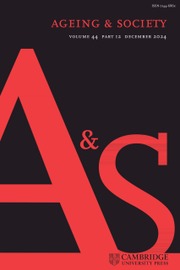No CrossRef data available.
Article contents
Effect of age on susceptibility to the attraction effect in sequential risky decision-making
Published online by Cambridge University Press: 20 November 2024
Abstract
Our study aims to contribute to the existing body of research on age-related changes in decision-making by investigating susceptibility to the attraction effect across adulthood. Prior studies have produced inconsistent conclusions regarding the decision-making abilities of older individuals, with some portraying them as easily manipulated and risk-averse, while others suggest the opposite. To address this issue, we conducted two experiments using a novel paradigm of the roulette task: (1) in an online environment with 357 participants and (2) in a laboratory setting with 173 participants. The results were consistent and demonstrated the robustness of the attraction effect. However, no age differences in susceptibility to the attraction effect as a common decision bias were found. As predicted, older adults were more likely to commit simple decision-making mistakes, especially in the preliminary trials, which could have serious financial or societal consequences. Additionally, older adults exhibited more risk-seeking behaviours. Furthermore, we observed that the dynamics of decision competence (as indicated by a decrease in the selection of erroneous decoy options and an increase in decision fluency) were similar for both younger and older adults, suggesting preservation of the ability to optimise decision-making while becoming familiar with new tasks. These findings provide insight into the cognitive functioning of older adults and indicate that decision-making abilities in late adulthood may be more complex than commonly assumed.
Information
- Type
- Article
- Information
- Copyright
- © The Author(s), 2024. Published by Cambridge University Press.

